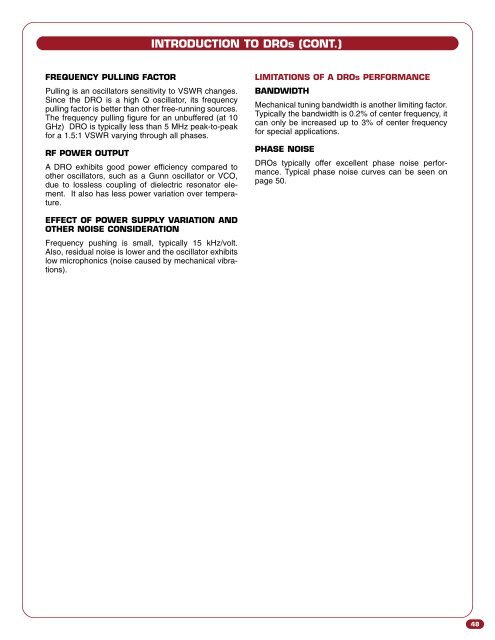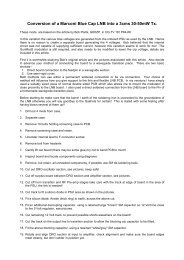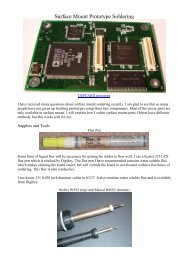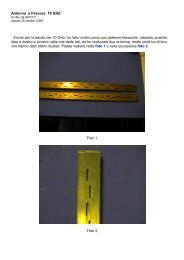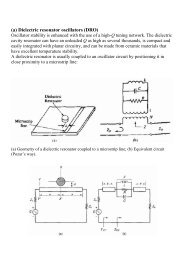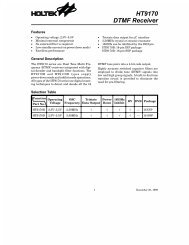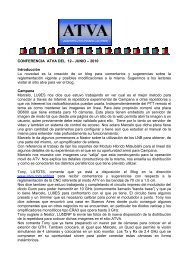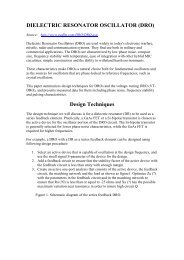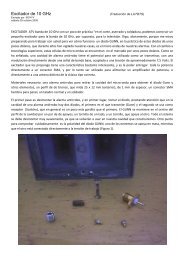FREE-RUNNING DIELECTRIC RESONATOR OSCILLATORS - ATVA
FREE-RUNNING DIELECTRIC RESONATOR OSCILLATORS - ATVA
FREE-RUNNING DIELECTRIC RESONATOR OSCILLATORS - ATVA
You also want an ePaper? Increase the reach of your titles
YUMPU automatically turns print PDFs into web optimized ePapers that Google loves.
INTRODUCTION TO DROs (CONT.)<br />
FREQUENCY PULLING FACTOR<br />
Pulling is an oscillators sensitivity to VSWR changes.<br />
Since the DRO is a high Q oscillator, its frequency<br />
pulling factor is better than other free-running sources.<br />
The frequency pulling figure for an unbuffered (at 10<br />
GHz) DRO is typically less than 5 MHz peak-to-peak<br />
for a 1.5:1 VSWR varying through all phases.<br />
RF POWER OUTPUT<br />
A DRO exhibits good power efficiency compared to<br />
other oscillators, such as a Gunn oscillator or VCO,<br />
due to lossless coupling of dielectric resonator element.<br />
It also has less power variation over temperature.<br />
LIMITATIONS OF A DROs PERFORMANCE<br />
BANDWIDTH<br />
Mechanical tuning bandwidth is another limiting factor.<br />
Typically the bandwidth is 0.2% of center frequency, it<br />
can only be increased up to 3% of center frequency<br />
for special applications.<br />
PHASE NOISE<br />
DROs typically offer excellent phase noise performance.<br />
Typical phase noise curves can be seen on<br />
page 50.<br />
EFFECT OF POWER SUPPLY VARIATION AND<br />
OTHER NOISE CONSIDERATION<br />
Frequency pushing is small, typically 15 kHz/volt.<br />
Also, residual noise is lower and the oscillator exhibits<br />
low microphonics (noise caused by mechanical vibrations).<br />
48


